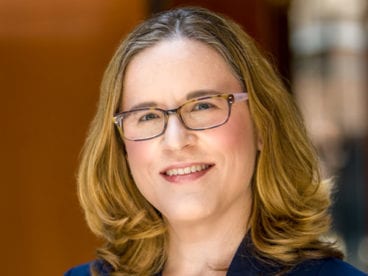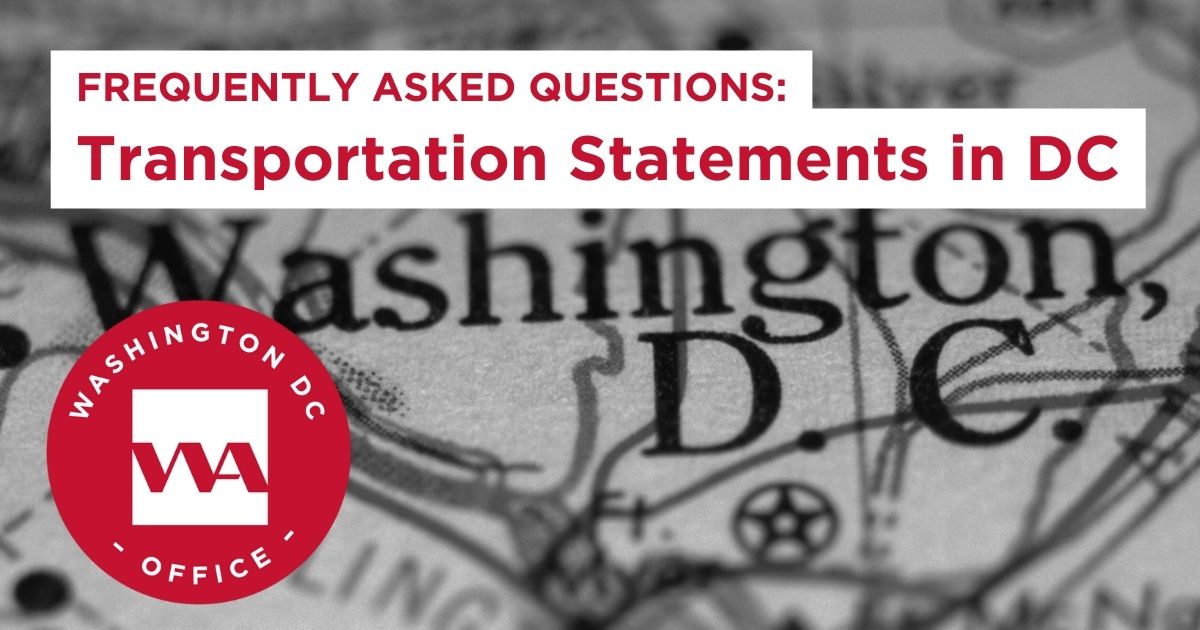Q: What is a Transportation Statement?
A: In DC, a transportation statement is an abbreviated form of a traffic study that typically is required when the threshold for a Comprehensive Transportation Review is not met.
Q: When is a Transportation Statement Required?
A: A Transportation Statement generally is required for projects that require approval from the Board of Zoning Adjustment, the Zoning Commission, or the Public Space Committee when the project generates fewer than 100 person trips per hour and fewer than 25 vehicle trips per direction per hour.
Q: Is a Transportation Statement required for a project permitted as a matter-of-right?
A: Transportation Statements typically are not required for matter-of-right projects. However, if the project will require curb cut approval and it generates a substantial volume of traffic or has a specific transportation element that could create traffic impacts, a Transportation Statement or even a Comprehensive Transportation Review could be required.
Q: What are the required elements of a Transportation Statement?
A: The specific elements of a Transportation Statement vary depending on the type of application, but all must include information about the current site, site history, current and relevant past zoning actions, and an evaluation of transportation characteristics of the proposed project, including site access and circulation and the number of trips generated by the project by mode.
Below are some examples of specific elements that may be required depending on the type of application filed for the project:
Required Elements of DC Transportation Statements Based on Application Type
| Application Type | Required Element |
|---|---|
| Parking Relief (for 5 or more spaces) | Parking study evaluating the current demand of on-street parking in the vicinity of the project and locations of off-street parking facilities in the area
Transportation Demand Management Plan identifying strategies to reduce vehicular trips and encourage non-auto modes of travel |
| Loading Relief | Loading Management Plan establishing protocols for how deliveries will be accommodated for the project |
| Changes to Curbside Space | Curbside Management Plan depicting the existing and proposed uses along the curb, noting any applicable hours of restrictions |
Q: How do I determine if a Transportation Statement is required for my project?
A: A trip generation analysis must be conducted to determine whether the number of trips that will be generated by the project will meet the threshold for a Comprehensive Transportation Review or whether a Transportation Statement will suffice. Contact Jami Milanovich on our DC Team to find out what type of study will be required for your project.
Q: Once a determination is made, what are the next steps?
A: Once our DC traffic engineering team determines the type of study required, we then complete the required DDOT scoping document and secure DDOT’s concurrence regarding the type of study and scope. Once the scope is approved, the required study can be prepared. DDOT requires that the study (whether a Transportation Statement or Comprehensive Transportation Review) be submitted at least 45 days prior to the public hearing for the project.
Learn more about Transportation Statements for your Project in DC

Jami L. Milanovich, P.E.
Principal | (202) 556-1113
jlmilanovich@wellsandassociates.com
A registered Professional Engineer, Jami has over two decades of experience creating innovative transportation solutions in the District of Columbia. Her work includes traffic impact studies, parking analyses, intersection improvement design, loading management plans, site access studies, and expert witness testimony.
Jim Watson, AICP, PTP
Senior Associate | (202) 335-2684
jwwatson@wellsandassociates.com
Jim Watson is a transportation planner with over two decades of experience in multimodal planning and design in the private and public sectors, notably in the District of Columbia where he has experience with comprehensive transportation reviews, parking and traffic analyses, transit-oriented development, traffic design, campus planning, and more.


